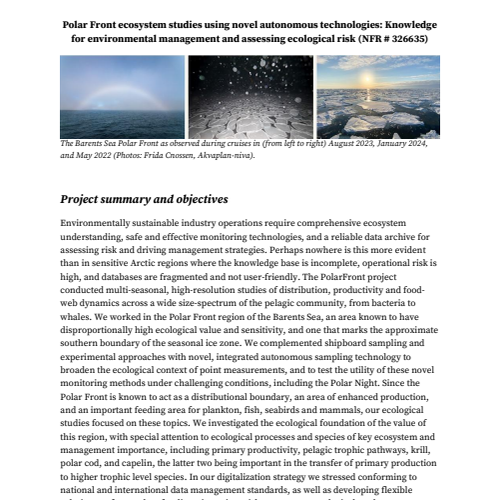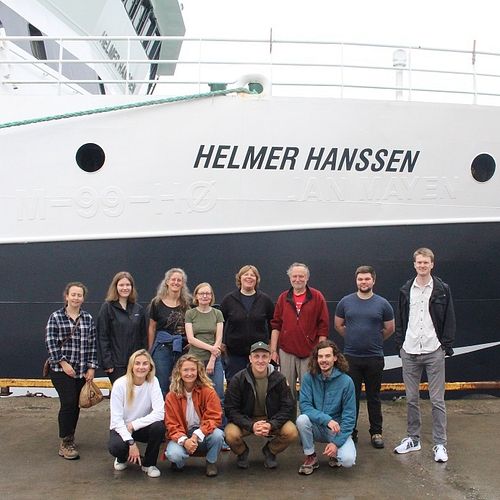7 April 2025 news
Environmentally sustainable industry operations require comprehensive ecosystem understanding, safe and effective monitoring technologies, and a reliable data archive for assessing risk and driving management strategies. Perhaps nowhere is this more evident than in sensitive Arctic regions where the knowledge base is incomplete, operational risk is high, and databases are fragmented and not user-friendly.
In the PolarFront project scientists have conducted multi-seasonal, high-resolution studies of distribution, productivity and food web dynamics across a wide size-spectrum of the pelagic community, from bacteria to whales. The team worked in the Polar Front region of the Barents Sea, an area known to have disproportionally high ecological value and sensitivity, and one that marks the approximate southern boundary of the seasonal ice zone. Traditional shipboard sampling was complemented with experimental approaches with novel, integrated autonomous sampling technology to broaden the ecological context of point measurements, and to test the utility of these novel monitoring methods under challenging conditions, including the Polar Night.
Ecosystem structure and function
Since the Polar Front is known to act as a distributional boundary, an area of enhanced production, and an important feeding area for plankton, fish, seabirds and mammals, the ecological studies focused on these topics. The team investigated the ecological foundation of the value of this region, with special attention to ecological processes and species of key ecosystem and management importance, including primary productivity, pelagic trophic pathways, krill, polar cod, and capelin, the latter two being important in the transfer of primary production to higher trophic level species.
Education and user-relevant results
More than 30 early career researchers took part in PolarFront research, including 11 whose projects were directly tied to our project. In the project digitalization strategy both these ECR's and the rest of the team put effort into aligning with national and international data management standards. More than 60 data sets have already been published from the project. Flexible solutions to format data for direct input into risk assessment, ecological, and management modelling systems were developed. Close cooperation and active involvement of industry and management bodies throughout the project assured results were relevant and accessible to end-users. In addition, considerable effort was put into communicating results to diverse stakeholders and the general public through scientific presentations, articles/blogs in the popular science press and video, like this video produced by Njaal Heddle:
https://akvaplan.no/no/video/2...o/...
Read more about the PolarFront project: https://akvaplan.no/no/prosjek...



